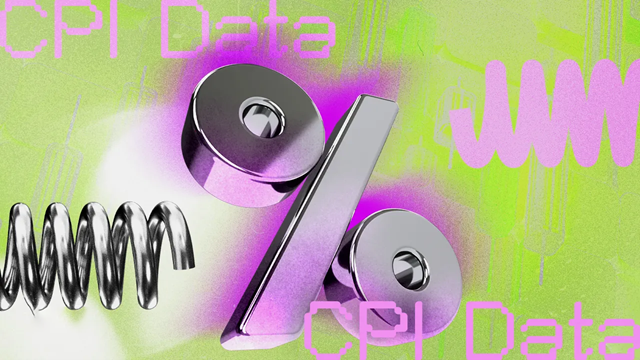Bitcoin Struggles After June CPI Report: US Inflation Rises to 2.7%, Will the Fed Keep Rates?

The US Bureau of Labor Statistics (BLS) released its June Consumer Price Index (CPI), showing that US inflation continued to rise to 2.7% year-on-year, higher than the previous expectation of 2.6%. This data immediately impacted financial markets, including the cryptocurrency market, which is closely monitoring macroeconomic indicators to predict the upcoming monetary policy from the US Federal Reserve (Fed).
CPI Beats Expectations, US Inflation Rises for Second Consecutive Month
With an annual growth rate of 2.7%, the June CPI index marked the first time in five months that the market forecast was exceeded. Compared to the previous month, the headline CPI index increased by 0.3%. This is the second consecutive month of higher inflation compared to the first months of the year, when CPI in May reached 2.4% and in April it was only 2.3%.
Financial experts say the cause of the increase in inflation comes from many factors, including rising oil prices due to geopolitical instability in the Middle East and tensions in the Strait of Hormuz - an important global oil transportation route. In addition, the tariff policies revived under President Donald Trump are also contributing to pressure on consumer prices.
Bitcoin reacts cautiously, the market prices the possibility of keeping interest rates unchanged
Immediately after the announcement of the CPI index, the price of Bitcoin (BTC) reacted slightly. From the previous deep drop, BTC recovered and fluctuated around the $ 117,000 area. Before the data was released, the world's largest cryptocurrency had fallen sharply from a peak of nearly $123,000 to below $117,000, reflecting investors' defensive sentiment.
However, the reaction of BTC and altcoins was generally "silent", as investors had largely priced in the risk of rising inflation this month. On market sentiment indicators, most of the high-fundamental coins were trading in the red, reflecting widespread caution.
Fed unlikely to cut interest rates in July
Prior to the June CPI release, the CME FedWatch tool showed a 95% chance that the Fed would leave interest rates unchanged at the FOMC meeting on July 30. After the CPI data, the probability increased to 97.4%, all but eliminating the possibility of a rate cut at the upcoming meeting.
Many analysts believe that with inflation rising for the past two months, the Fed will prioritize price stability over stimulating growth. “Whether one blames tariffs or fundamentals, it is clear that the Fed has no basis to ease monetary policy at this time,” said an analyst from Kobeissi Letter.
Fed Chairman Jerome Powell also said in early July that he expected to see “some higher inflation readings” in the summer, stressing that businesses are finding it increasingly difficult to absorb the cost of tariffs, forcing them to pass the costs on to consumers.
Trump continues to put pressure on the Fed
On the Truth Social platform, President Donald Trump quickly spoke out after the CPI report, calling the 2.7% inflation rate “very low” and continuing to call on the Fed to cut interest rates “by at least three percentage points.” This is not the first time Trump has attacked the Fed’s prudent monetary policy.
Observers say the pressure from the White House, especially with the election approaching, will continue, but the likelihood of the Fed giving in is low if inflation data continues to deteriorate.
Tariff Pressure: Inflation May Not Peak
One prominent factor highlighted by economists is the impact of trade policy. Under Trump, the reimposition of tariffs on imports from China and elsewhere is causing prices to rise again. Initially, many businesses chose to reduce profit margins or consolidate inventory to limit the impact, but now most are being forced to pass the costs on to consumers.
Gregory Daco, chief economist at EY-Parthenon, said: “You are still in an environment where businesses are using a range of strategies to mitigate the impact of tariffs. But that tolerance is reaching its limit.”
Conclusion: Bitcoin in a period of “sensitivity” to the macroeconomy
In the current period, Bitcoin is no longer just a purely speculative asset but is increasingly becoming an indicator that “goes hand in hand” with macro factors such as interest rates, inflation and geopolitics. BTC’s cautious performance ahead of the June CPI report shows that the crypto market is entering a more mature phase, when investment decisions are made based on traditional financial data.
With the FOMC meeting just over two weeks away, the market will continue to closely monitor the statements of Fed officials in the coming time to shape interest rate expectations, an important factor that can determine the next direction of Bitcoin and the entire digital asset market.
